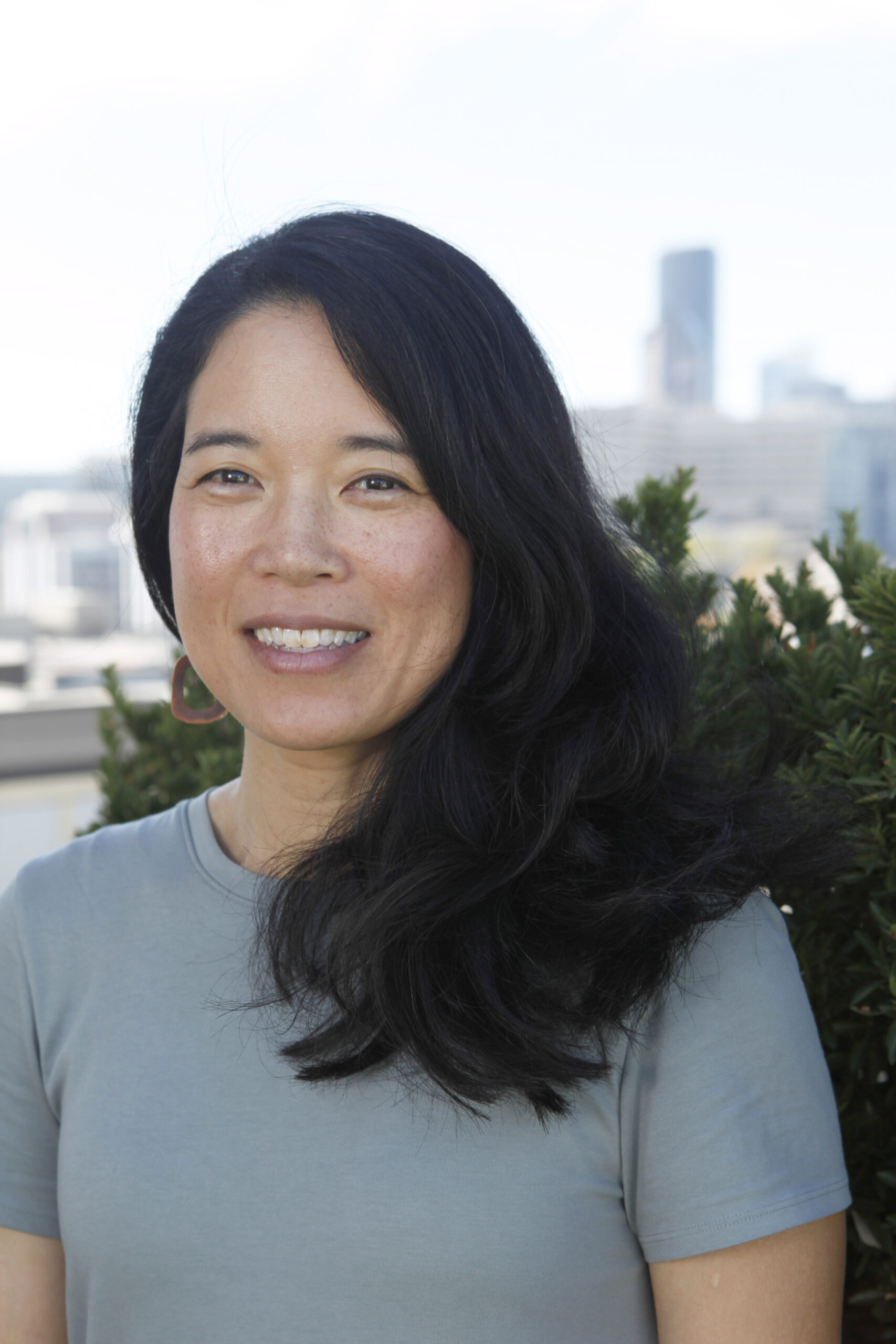Closed primary elections are not ideal for American democracy. In most states, the Democratic and Republican parties act as gatekeepers. They regularly bar independent voters from taking part, giving small percentages of older, wealthier hyperpartisans the power to select the general election menu for all levels of government. Appeasing this subset of voters requires politicians to both run and govern closer to the extremes, leaving the somewhat more moderate independent voters that make up 40 percent of the American electorate with scant representation.1 Mix in misinformation and carefully cultivated culture wars and voila! America is far more divided than it should be.
Open primaries, so called because they’re open to all candidates and all voters, are one antidote to fevered partisanship. In an open primary, the major parties can’t dictate which voters take part. And with all voters in play, candidates have less incentive to ally themselves with those on the fringes.
But not all open primaries are the same. “Top-four” or “top-five” races send the four or five top candidates on to the general election. Others, called “top-two” races, send just two. The number of candidates that advances matters hugely to an open primary’s success in overcoming the more destructive forms of partisanship and building a well-rounded slate of candidates. Alaska’s top-four primary system has important advantages over those in states such as Washington and California, where only two candidates make it to the general election:
- Minimizing the chances that one party will monopolize the general election ballot;
- Leaving more room for third-party and independent candidates to compete;
- Opening the way to ranked choice voting; and
- Reducing the need for strategic voting, where voters support a candidate who’s not their favorite but can likely beat the one they just can’t stand and/or has the best chance at success.
Here’s more on why advancing four (or five) candidates from an open primary is better than just two.
In a Top-Four Open Primary, Parties Have a Harder Time Monopolizing the General Election
In 2016, two Democrats won the top-two open primary for one of California’s Senate seats. Kamala Harris, now Vice President, won 40 percent of the open primary vote. Second-place candidate Loretta Sanchez won 19 percent. It was the first time since California introduced direct elections in 1914 that no Republican had ended up on the ballot. True, the state has shifted leftward, and a Republican win would have been a stretch. But if the primary had yielded more winners, Republican voters at least could have had representation on the ballot and a voice in the general election contest through the third- and fourth-place primary finishers, Duf Sundheim and Phil Wyman.
A similar situation unfolded in Washington State in 2020, where the top-two open primary for lieutenant governor sent two Democrats to the general election. About 7 percent of the nearly 1,000 top-two primaries run in Washington State since 2008 have seen candidates from the same party advance to the general. In 37 general elections, Democrats have been the only party on the ballot. Same goes for Republicans in 32 elections.
Top-two proponents argue that same-party elections simply reflect the preferences of a particular political jurisdiction. If a district is overwhelmingly Democratic, what’s the problem with having two Democrats running? they would say. Well, if more bipartisanship and less polarization is the goal, America’s political systems should be structured accordingly. Running two candidates of the same political party in a general election, to the exclusion of all other candidates, eliminates a high-profile public forum for debating political philosophies. And when people do not see their values represented in a race and/or don’t like the candidates, they become alienated from the democratic process.
Duopoly is a problem, too. In 2020, third-party candidates were essentially absent from the federal and state legislative general elections in California and Washington. The systems in those states aren’t aligned with the political zeitgeist: Americans are hungry for a strong third party. In 2021, 62 percent of adults told the polling firm Gallup that “parties do such a poor job of representing the American people that a third party is needed.” The problem of Democrats and Republicans dominating American elections is nothing new, and we can’t blame top-two primaries as the cause. But we can’t look to them as a solution either.
In Alaska, top-four open primaries make major-party domination in general election races far less likely and leave more room for third parties than top-two. This is totally appropriate, since Alaska has the highest percentage of registered undeclared and nonpartisan voters of any state in the country. These voters make up about 58 percent of total registered voters in Alaska, and they do swing. For example, Joe Biden won Anchorage, Alaska’s largest city, by a nose in November 2020. Seven months later, Anchorage sent Dave Bronson, a staunch conservative, to the mayor’s office.
In the unlikely event a single party dominated an Alaska district so heavily that it sent four candidates from one party to the general, there would still be more competition than in a two-candidate race. And candidates would have an incentive and a path for winning over voters outside their party. Those who could successfully win the district’s minority party voters would have an advantage in both pick-one and ranked choice scenarios.
Alaska’s Top-Four Open Primaries Let Voters Rank Candidates
Election season came early in Alaska this year. In March, Representative Don Young, Alaska’s lone US House member, passed away. The special election to fill the late Congressman’s seat marks the debut of Alaska’s new system for choosing elected officials, an open primary that sends the top four vote-getters on to a ranked choice general election. The field is unusually crowded for several reasons: A House seat occupied for 49 years by an extremely unbeatable incumbent is suddenly up for grabs. The race is wide open, with no clear favorite. The winner only has to serve in office for five months. And Alaska’s new election system has exposed paths to victory that were unnavigable under the closed primary system.
Alaska voters are mulling over 48 candidates on the special election open primary ballot. With the full electorate able to participate in the primary, a wider range of candidates can mount viable campaigns. There are 16 Republicans, 6 Democrats, 2 Libertarians, 2 from other minor parties, and 22 who are nonpartisan or have not declared their party affiliation. All are vying to finish in the top 4 and enter the ranked choice general election.
A ranked choice election does not work unless more than two candidates are competing. Voters rank the candidates from most to least favorite. If a candidate receives a majority of first-choice votes, that candidate wins. If no candidate achieves a majority with first-choice votes alone, then the candidate with the fewest first-choice votes is eliminated, and the voters who preferred that candidate have their vote count for their next preference on their ballot. This process continues until one candidate receives a majority of the vote.
The states that use top-two open primaries cannot use ranked choice voting in their general elections. And that’s a shame because ranked choice elections represent an improvement over the winner-take-all model that dominates North American elections. They ensure voters have a greater opportunity to pick their honest favorites in the order they actually prefer, with less concern about the spoiler effect. In certain races, the importance of securing second-place votes gives candidates incentives to cooperate with their competition (or at least not bash them so hard), leading to less of the negative campaigning that stresses out many voters.
Top-Four Open Primaries Require Less Strategic Voting by Minority Parties
With a field as large as Alaska’s House race and the political cards stacked against them, strategic voting in the US House special primary is on the minds of many Democrats. The latest poll, unveiled on May 10 by Alaska Survey Research, shows Republicans Sarah Palin and Nick Begich and independent Al Gross are shoo-ins for the general election. The fourth spot is up for grabs between three left-leaning candidates: Mary Peltola, Chris Constant, and Santa Claus. (Yes, that’s right. Santa Claus, from the city of North Pole, who’s a proponent of Medicare for All.) Two more Republican candidates, Josh Revak and Tara Sweeney, are polling within striking distance of the progressives.
Democrats appear hard-pressed to win this race. The poll projected Begich as the victor in a variety of scenarios. And registered Democrats make up about 13 percent of registered voters, while registered Republicans are about 25 percent. In a top-two primary, Democrats could have been shut out of the House special general election under a variety of scenarios. Knowing that, progressive voters would have been far more likely to vote strategically under a top-two system. But under top-four, Democrats will likely have a candidate in the race, even if more of them vote their conscience. That’s how the system should work; like Republicans in the blue states of Washington and California, Alaska’s minority party deserves representation in general elections.
Under top-two primaries, even majority parties need to resort to strategic voting when the election has many viable candidates. In Washington’s 2016 primary for state treasurer, five candidates each won at least 13 percent, splitting the vote among them. More people voted for Democrats than Republicans, but the Democratic votes were divided up more ways. Consequently, two Republicans went on to the general election, and Washington elected a Republican state treasurer for the first time in 60 years. In the next election, a Democrat retook the seat. Strategic voting would have clinched it for Democrats but prevented voters from choosing the candidates they truly believed in.
A top-four primary, would have sent two Rs and two Ds to the general, while also allowing Democratic voters to support their favorite candidates.
Washington State Primary for Treasurer, 2016
| Party | Candidate | Votes Won |
|---|---|---|
| Republican | Duane Davidson | 25% |
| Republican | Michael Waite | 23% |
| Democrat | Marko Liias | 20% |
| Democrat | John Paul Comerford | 18% |
| Democrat | Alec Fisken | 13% |
Looking Ahead: Adding Just Enough Choice with Top-Five Primaries
America’s political reality is far too diversified for an either/or primary system. The major parties have effectively branched into four parties, as described by Washington Post columnist Perry Bacon. On the Right are the Trump Republicans and Mitch McConnell’s Republican “Old Guard.” Meanwhile, the Left encompasses Center-Left Democrats (moderates like President Joe Biden, plus Never-Trumper refugees) and the Left-Left Democrats exemplified by Senator Bernie Sanders and Representative Alexandria Ocasio-Cortez.
To sum up, the term “Democrat” describes at least two overlapping but nonetheless competing ideologies, as does the term “Republican.” In a top-two system, these factions get conflated into a single brand that obscures their policy differences.
The top-four open primary is Alaska’s answer to America’s polyhedral political personality. But what about top-five? This reform, proposed by the Institute for Political Innovation, would make it even more difficult for a single party or even both major parties to monopolize or shut out third-party candidates in a general election. And it would be an even better vehicle for ensuring broad electoral representation in primaries, like Alaska’s, that attract a large number of candidates. A top-five primary system would have better odds of letting them all be exactly who they are, while not overwhelming voters with too much choice. And a ranked choice general election would still allow the candidates who appealed to the most voters to win.
Strong democracy depends on successful elections. And successful elections depend on whether voters believe the playing field, rules, and results are fair. The number of candidates an open primary sends to the general election may seem unimportant. But that one number can significantly shape a race. Top-two open primaries are a good start in giving more voters access to elections. Allowing four, or five, candidates to progress and giving voters a chance to rank them takes voter choice to the next level.










John Whitmer
Lee’s article here is a well-written compelling argument for open primaries that advance more than two to the general and for ranked-choice voting. Clear examples of past elections that might have been improved with these reforms illustrate much. Only those who fear a decrease in party power (lessening the duopoly’s grip on our elections), who are reluctant to give voters any more influence on elections than they already have, or who personally benefit from political polarization and extreme candidates could be opposed to these reforms. Unfortunately there appear to be more than a few such folks.